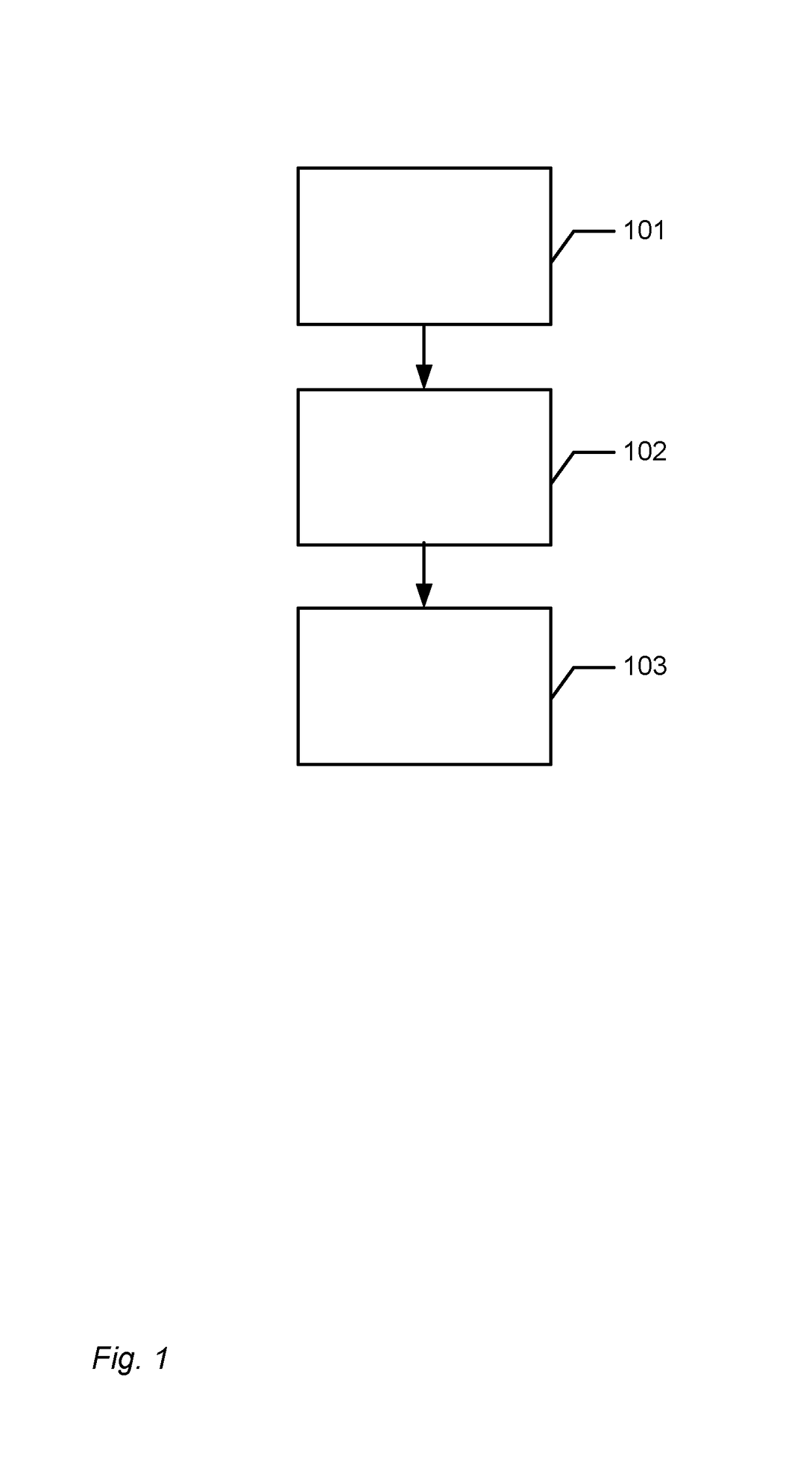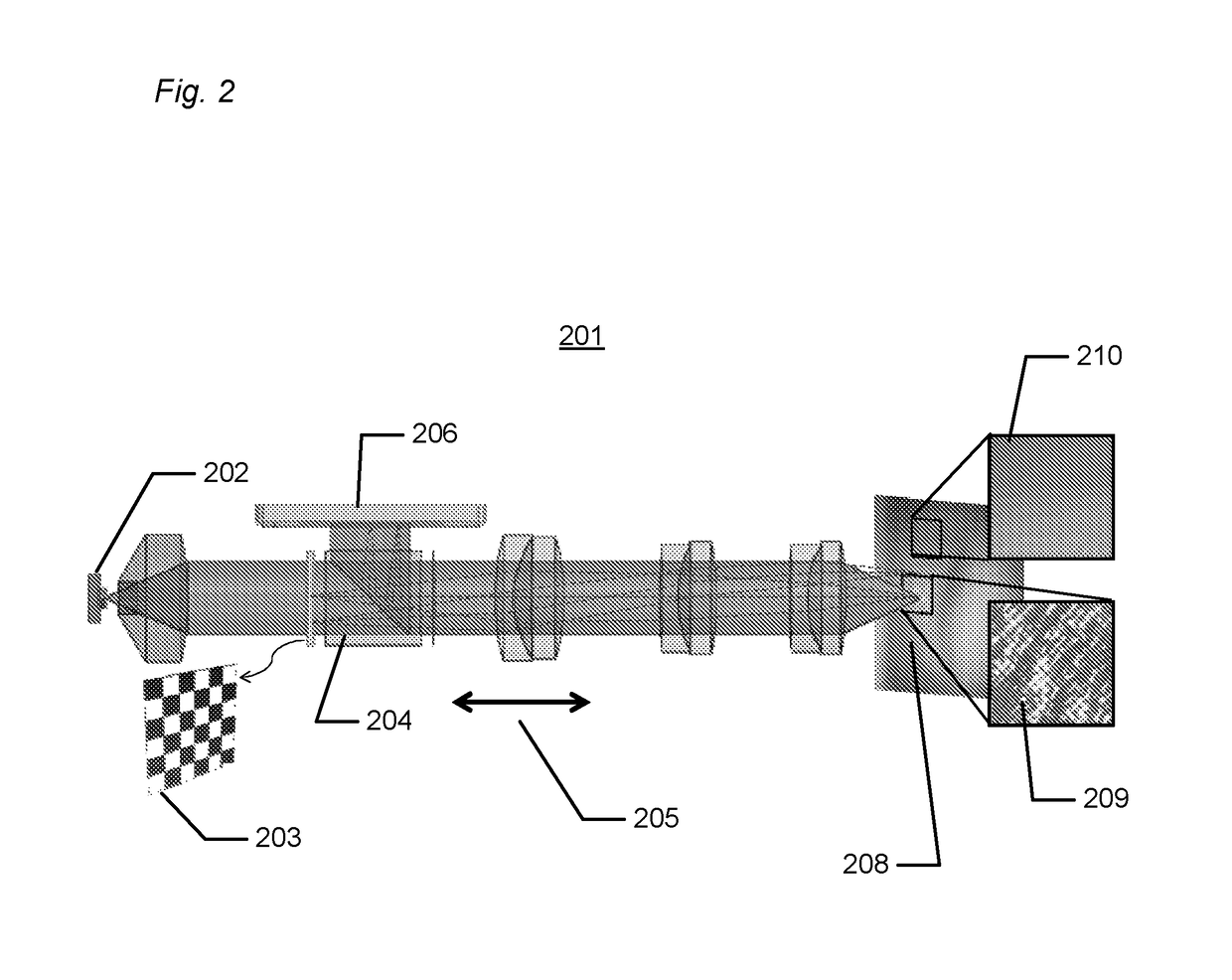Motion blur compensation
a compensation and motion technology, applied in the field of motion, can solve the problems of reduced computation time, scanner instability, and inability to process images acquired during motion, and achieve the effect of high frame rate and high resolution
- Summary
- Abstract
- Description
- Claims
- Application Information
AI Technical Summary
Benefits of technology
Problems solved by technology
Method used
Image
Examples
Embodiment Construction
[0240]In the following description, reference is made to the accompanying figures, which show by way of illustration how the invention may be practiced.
[0241]FIG. 1 shows a flowchart of a method for compensating for motion blur when performing a 3D scanning of at least a part of an object by means of a 3D scanner.
[0242]The motion blur occurs because the scanner and the object are moved relative to each other while the scanning is performed. The motion blur compensation comprises that:
[0243]In step 101 it is determined whether there is a relative motion between the scanner and the object during the acquisition of the sequence of focus plane images.
[0244]In step 102 a motion compensation based on the determined motion is performed, if a relative motion is determined.
[0245]In step 103 a 3D surface is generated from the sequence of focus plane images.
[0246]In some cases, a first 3D surface has been generated prior to steps 101-103 and the motion compensation in step 102 and / or the gener...
PUM
 Login to View More
Login to View More Abstract
Description
Claims
Application Information
 Login to View More
Login to View More - R&D
- Intellectual Property
- Life Sciences
- Materials
- Tech Scout
- Unparalleled Data Quality
- Higher Quality Content
- 60% Fewer Hallucinations
Browse by: Latest US Patents, China's latest patents, Technical Efficacy Thesaurus, Application Domain, Technology Topic, Popular Technical Reports.
© 2025 PatSnap. All rights reserved.Legal|Privacy policy|Modern Slavery Act Transparency Statement|Sitemap|About US| Contact US: help@patsnap.com



